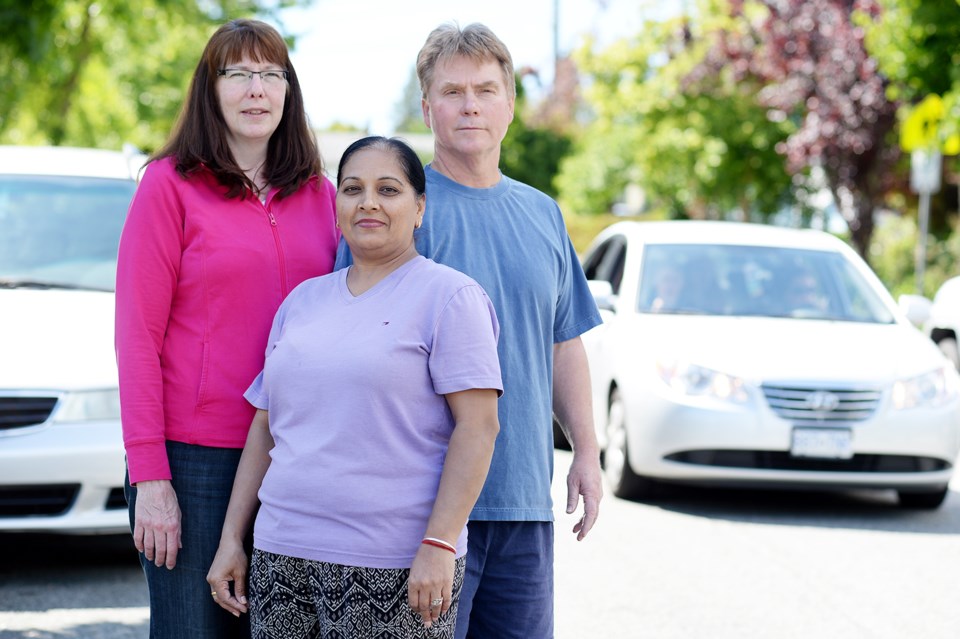Life has become “unbearable” for Keary Street residents since a traffic diverter was installed at the foot of Alberta Street last year.
David Hughes, who has lived on Keary Street for 20 years, said the city installed a temporary diverter at Alberta and East Columbia streets last year after residents on the neighbouring street complained to city hall about livability and safety concerns related to traffic volumes and speeders. Since then, Hughes said the traffic situation has gotten to the point where some Keary Street residents are thinking of selling their homes.
“You can’t open your windows. The noise is constant. It’s just horrible. When I moved here, there would be a car every two or three minutes. Now it’s five a minute. Unless you experience that, you don’t know what that’s like,” he said. “I have actually walked over, stood and counted cars on Alberta Street, they are every minute or two.”
Hughes contacted city hall six years ago with concerns about traffic on Keary Street, calling it a cross between a Walmart parking lot and a highway. He urged council to create a traffic-calming plan for the neighbourhood.
With southbound traffic no longer able to access the Brewery District via Alberta Street because of the diverter, Hughes said motorists now use Keary Street.
Lisa Leblanc, the city’s transportation manager, said the city is aware of residents’ concerns but doesn’t want to do anything without considering impacts on other streets.
“It’s like whack-a-mole. We don’t want to do something else that’s going to push the problem somewhere else and then we are constantly chasing our tail,” she said. “What I want to do is take a neighbourhood, look at it, and really look at it in a holistic way so that the decisions we are making are complete neighbourhood level decisions.”
A transportation study for Sapperton being done this year will consider the evolving transportation dynamics of the neighbourhood, such as expansion of Royal Columbian Hospital and the Brewery District and other developments in the area, Leblanc said. She said it’s also time for the city to review the neighbourhood’s traffic-calming plan (now known as a neighbourhood transportation safety and livability plan) that was done in the early 2000s.
“Some streets are more suitable in terms of carrying that traffic than others. Decisions have to be made about what the suitable streets are and how all that circulates. I am not going to speculate on where it’s going to land,” Leblanc said. “The volumes that we are seeing on Keary Street, they are higher than when the diverter went in on Alberta Street, but they are not excessively high. When you look at the context there, and you look at all the land uses there, you would expect to see higher volumes on that street than on other narrower, more removed streets in Sapperton.”
In March 2015, city council directed staff to proceed with installation of a traffic diverter on Alberta and East Columbia streets on a trial basis. If a notable amount of traffic was diverted to other streets, the staff report suggested no-entry restrictions could be considered from Richmond onto Simpson and Keary streets.
Hughes said he hasn’t pursued the matter through the local residents’ association because he doesn’t want to get into a screaming match with someone from Alberta Street. Ultimately, he believes it’s the city’s responsibility to find a solution to a problem it created by approving the diverter before doing a full traffic plan.
“What they did by putting in that diverter was pit neighbour against neighbour. It never should have happened. They should have had a cohesive plan for the area. They should never have protected one street over the rest,” he said. “It’s idiotic.”



